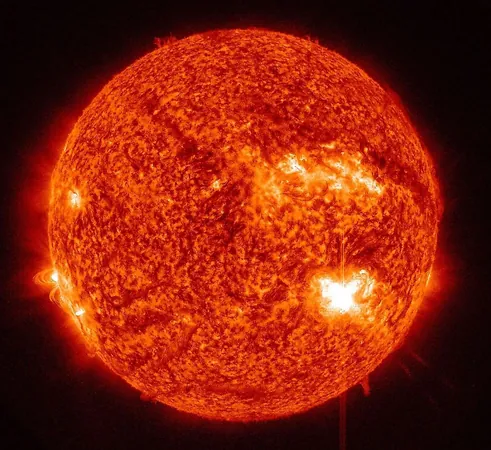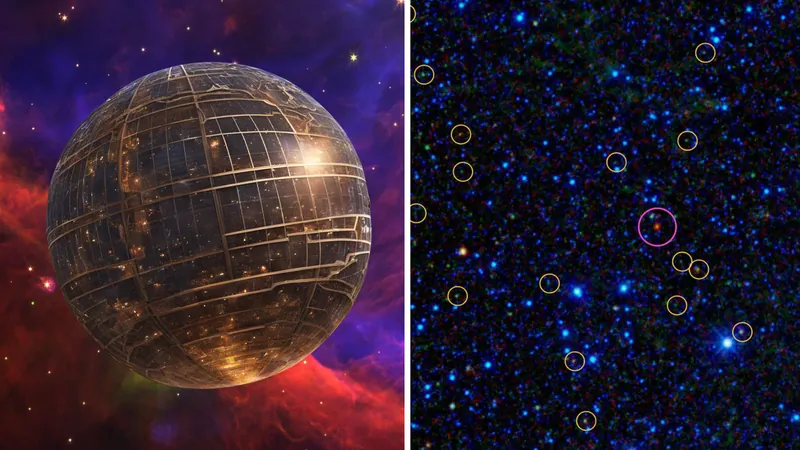
The Largest Solar Flare in Recorded History: The Carrington Event
2024-10-04
The Largest Solar Flare in Recorded History: The Carrington Event
In an awe-inspiring chapter of solar activity, the largest solar flare ever recorded erupted in 1859, an event now famously known as the Carrington Event. This monumental solar phenomenon reflects an extreme burst of electromagnetic radiation from the sun’s surface, classified into several categories based on intensity: A-class being the weakest, and escalating up through B, C, M, and ultimately X-class flares. Each class is further defined by a numerical value indicating its strength; the Carrington Event has been retrospectively graded as a staggering X45 class—an unprecedented peak that remains unmatched to this day. The most potent solar flare recorded since then only reached half that magnitude.
While Earth’s atmosphere provides a protective shield against harmful gamma radiation from solar flares, it cannot wholly block other, less harmful types of radiation. These rays can penetrate our atmosphere, sometimes resulting in significant disturbances like radio blackouts. The Carrington Event significantly raised awareness of the connection between solar activity and technological malfunctions, particularly after its vivid display.
What Happened During the Carrington Event?
On that fateful day in 1859, astronomer Richard Carrington was sketching sunspots when he was momentarily blinded by an intense flash of light. In a matter of minutes, telegraph systems globally experienced unprecedented chaos. Operators reported sparks flying from their machines, rendering them inoperative.
The visual spectacle was equally mesmerizing; the aurora borealis illuminated the skies as far south as the Caribbean, while the aurora australis shone bright in places like Chile. The brightness was so extraordinary that it was said to resemble daylight even at night.
Remarkably, shortly after the flare had concluded, telegraph operators discovered that messages could still be transmitted through the charged atmosphere, highlighting the bizarre effects of the Carrington Event. Experts from the National Oceanic and Atmospheric Administration (NOAA) estimate events of this magnitude occur only once every 500 years, underscoring the rare nature of such occurrences.
What If It Happened Today?
If a solar flare of the same magnitude were to occur in the modern age, the impact could be catastrophic. Our reliance on technology has intensified since 1859; satellites, power grids, and communication systems play critical roles. A solar event resembling the Carrington Event could cripple the electrical infrastructure, trigger widespread power outages, disrupt internet connectivity, and potentially damage satellites in orbit.
Governments and experts are acutely aware of these vulnerabilities. There are ongoing discussions about enhancing our capacity to forecast solar weather and strengthen our power grids and communications infrastructure against potential solar threats.
Such a colossal event could usher in more than just disruption; it may lead to heightened awareness of solar phenomena, sparking a renewed interest in space weather and its implications for our increasingly technology-dependent world. The question looms ever larger: Are we prepared for the next Carrington Event?









 Brasil (PT)
Brasil (PT)
 Canada (EN)
Canada (EN)
 Chile (ES)
Chile (ES)
 España (ES)
España (ES)
 France (FR)
France (FR)
 Hong Kong (EN)
Hong Kong (EN)
 Italia (IT)
Italia (IT)
 日本 (JA)
日本 (JA)
 Magyarország (HU)
Magyarország (HU)
 Norge (NO)
Norge (NO)
 Polska (PL)
Polska (PL)
 Schweiz (DE)
Schweiz (DE)
 Singapore (EN)
Singapore (EN)
 Sverige (SV)
Sverige (SV)
 Suomi (FI)
Suomi (FI)
 Türkiye (TR)
Türkiye (TR)